 Time: 2023-11-25
Time: 2023-11-25  Views: 273
Views: 273
[Foreword]
Most companies are still unable to understand the causes and treatment methods of unallocated and unallocated differences. Combining 1,000+ successful cases, senior experts from Dison have summarized six major scenario cases online to help you solve your problems.
This article publishes corresponding research experiences and suggestions based on Mr. Yang Yongqing, chief financial expert of Dison, who has 24 years of rich experience in the field of SAP ERP and the common misunderstandings he discovered during the implementation of ERP projects.
[Problem Description]
Can you share the case reference of unallocated and unallocated warehousing direction in actual project implementation?
[Case 1: Unallocated and unallocated in the warehousing direction - price limit 1]
After running the material ledger CKMLCP, it is found that there is an unallocated difference in the material: 545.92 yuan, as shown below.
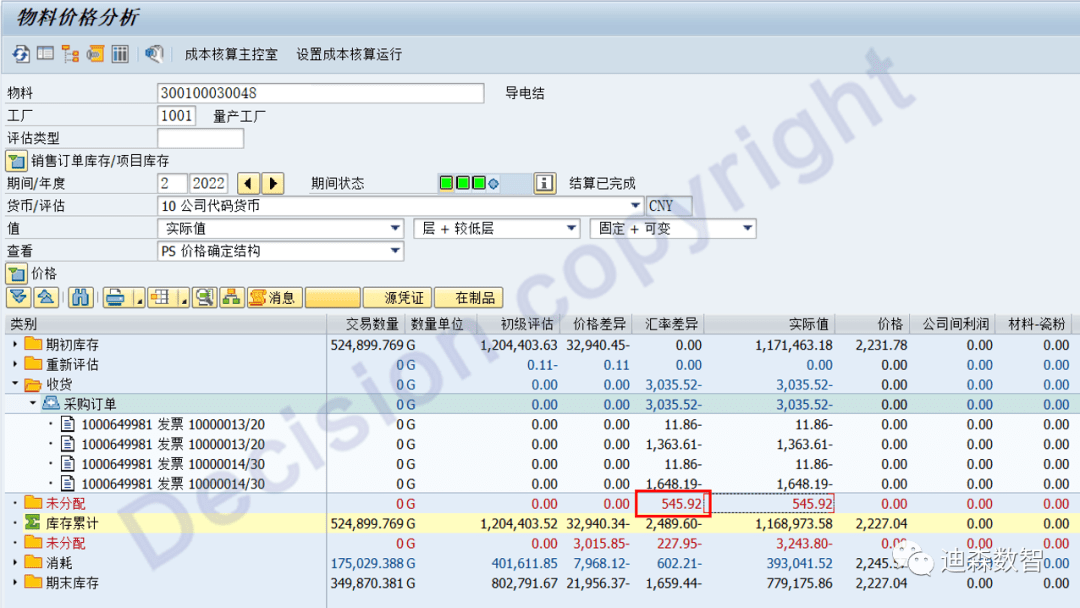
The main reason is that there are differences in the invoice settlement of purchase orders 10000013 and 10000014.

Beginning quantity + warehousing quantity = 524899.769 G;
Therefore, the cumulative difference that the inventory can bear = -3,035.52 * 524899.769 / 640000 = -2489.60 yuan;
Unallocable difference = -3,035.52 - (-2489.60 ) = -545.92 yuan.
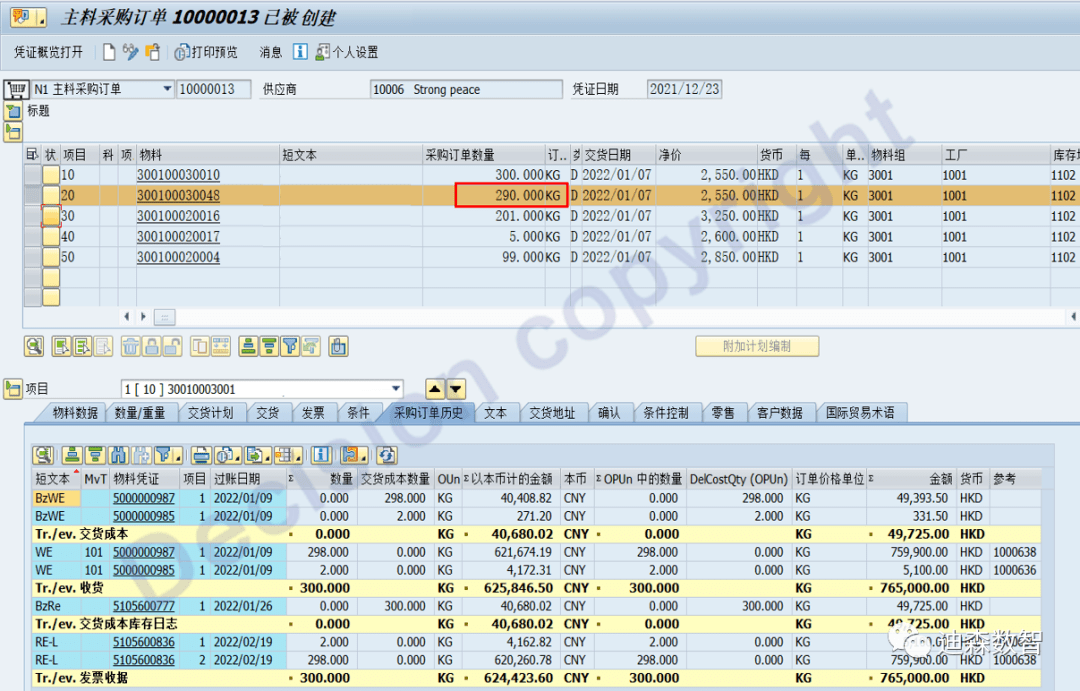
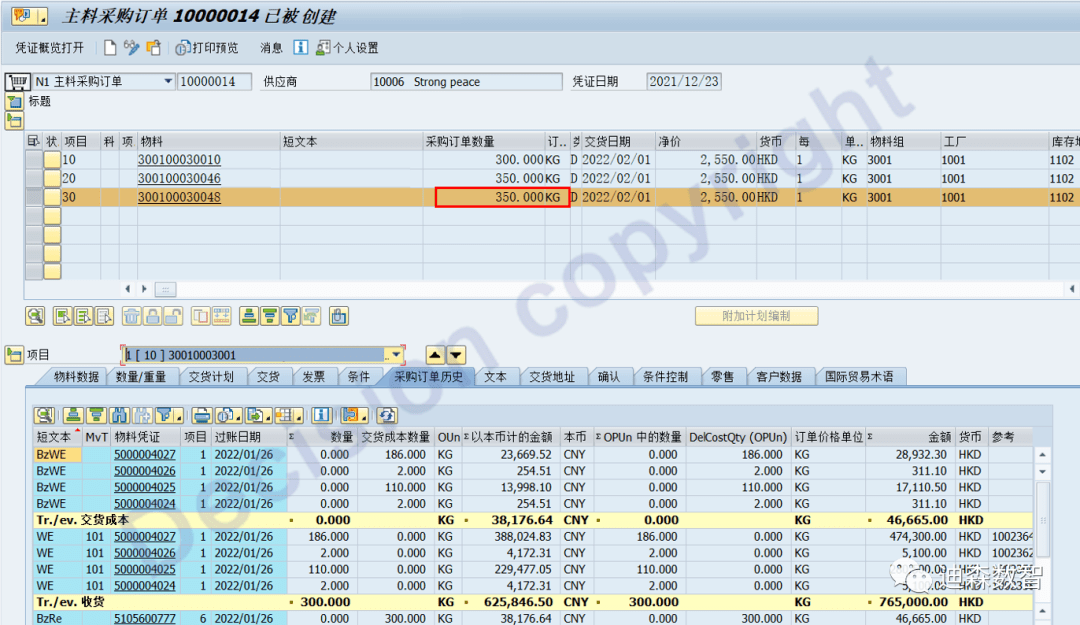
Processing: Rerun the material ledger CKMLCP for this material.
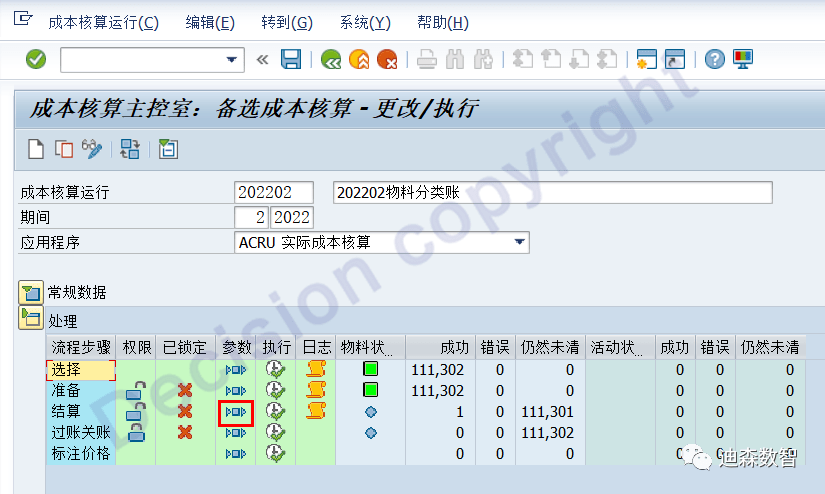
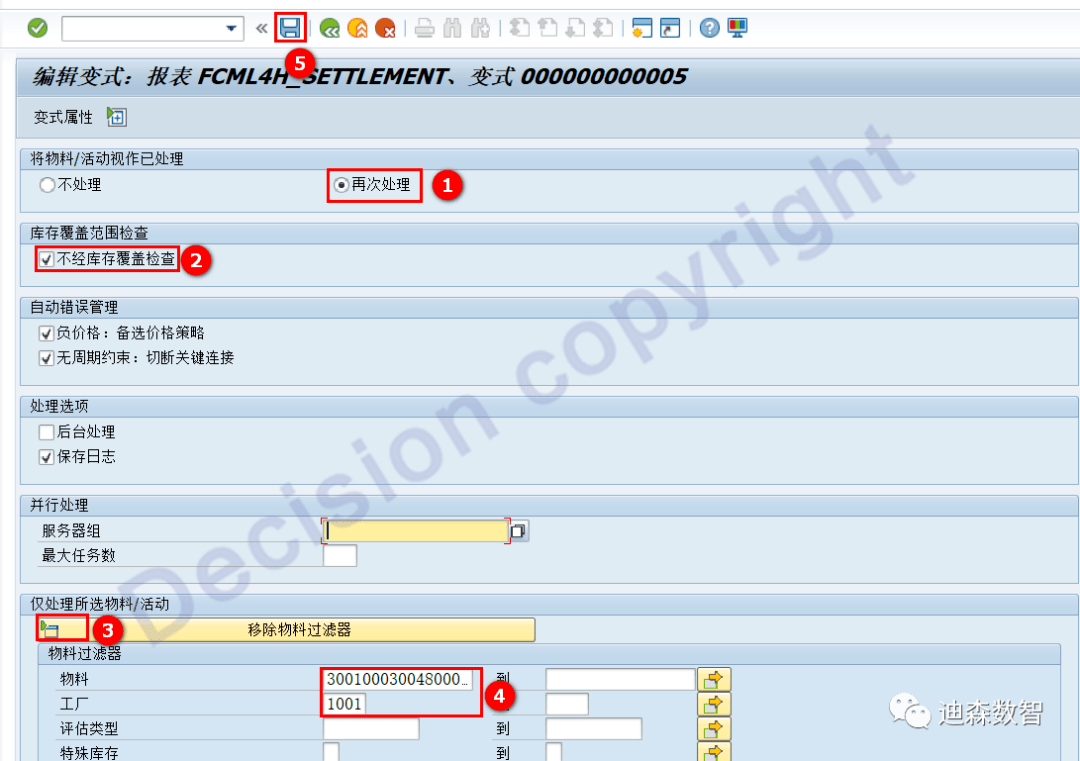
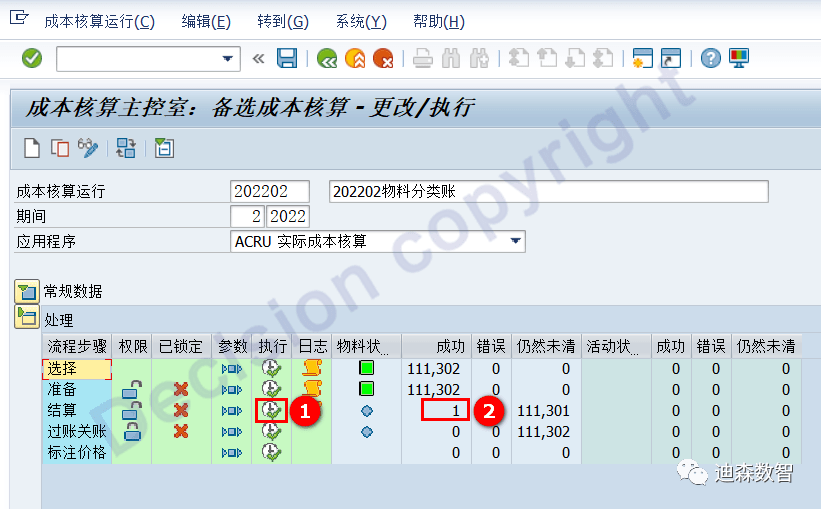
After CKMLCP is re-run, check the CKM3N material ledger and you can see that the cost difference amount -3,035.52 is all borne by the current period: inventory accumulation. The coverage relationship between the quantity corresponding to the difference 640000G and the inventory accumulation quantity 524899.769 G is no longer compared.
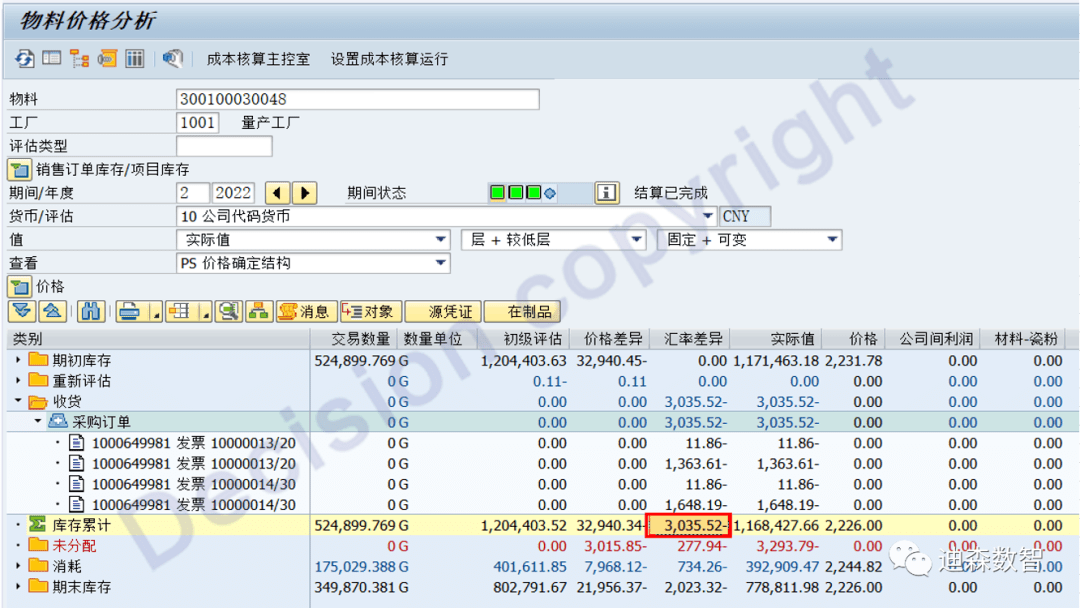
Thinking summary
① Limitations of the “without inventory coverage check” option:
If: the accumulated inventory for the month is only 10,000 PC, the purchase settlement difference is 1 yuan, and the corresponding quantity is 1 PC. If the difference is all borne by inventory, the cost price will not change much and the inventory amount will be normal;
If: the accumulated inventory for the month is only 1PC, and the purchase settlement difference is 10,000 yuan, the corresponding quantity is 10,000PC. The difference is all borne by the inventory, causing inventory cost price distortion and inventory amount to be inflated.
② How to judge whether it is borne by inventory?
If: the difference between the difference quantity and the accumulated inventory is not large, the difference will be borne by the accumulated inventory; (it is recommended to judge whether the difference quantity is greater than 120% of the accumulated inventory).
③ How to deal with the difference in quantity exceeding the cumulative inventory quantity?
It is recommended to use MR22 for processing, see MR22 adjustment in the following case.
④ How to select "without inventory coverage check" when running CKMLCP?
Suggestion: Do not select all, or do not select "No inventory coverage check" at all.
When running CKMLCP for the first time, do not select "Without inventory coverage check". After running, check the report to check whether it is unallocated or unallocated, and analyze the difference if the amount exceeds 10 yuan. When running CKMLCP for the second time, select "Without inventory coverage check" and specify "Factory + Material" for specific material processing.
[Case 2: Unallocated and unallocated in the warehousing direction - Price limit 2]
After running CKMLCP, query the CKMVFM - Value Flow Monitor report and find that material 1000900026 has a difference that cannot be allocated in the warehousing direction. Enter CKM3N to view the following:

This month's cost difference mainly comes from procurement. Double-click the data line 582.30 - to enter the screen: point source document.
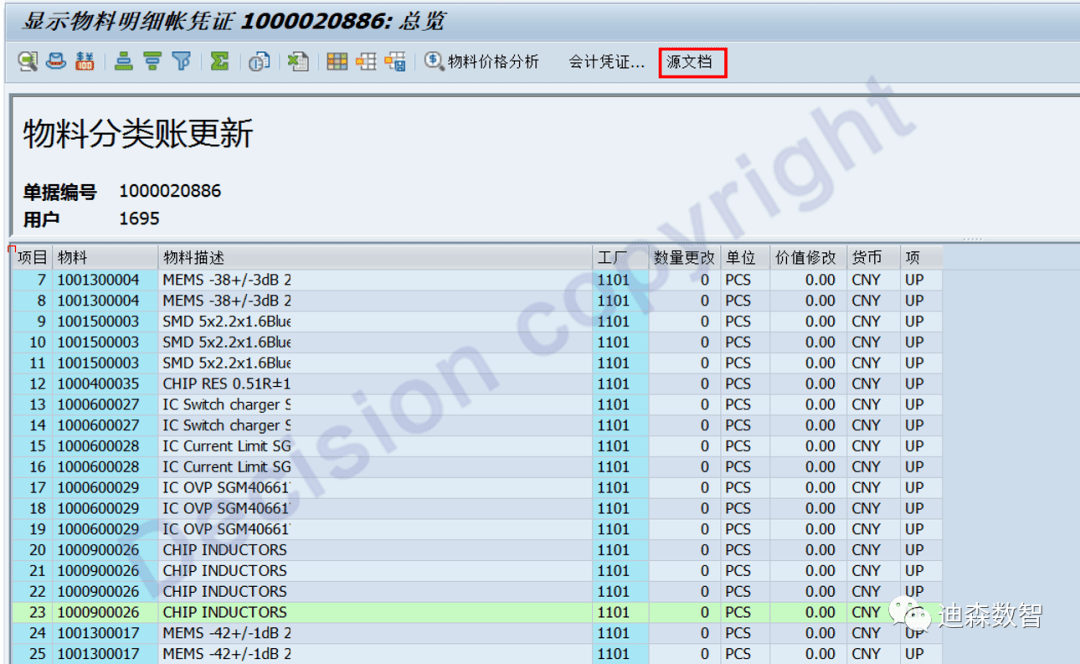
In the purchase invoice settlement screen, you can see the settlement difference. There is no specific warehousing detail line assigned to the "Purchase Order Reference" tab, and the difference is directly assigned to the inventory material.
The credit difference amount is 582.30 yuan, corresponding inventory quantity: 30333 PCS.
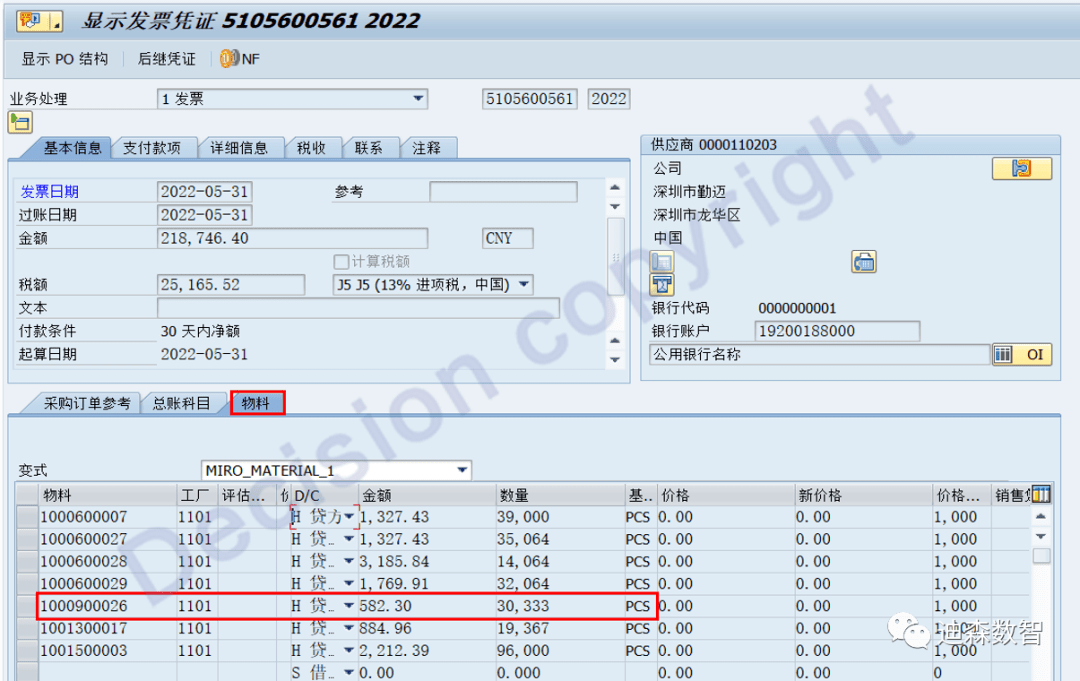
The system then allocates the credit difference amount of 582.30 yuan to the three warehousing detail lines of "Purchase Order Reference".
The calculation logic of manual calculation of SAP is as follows. SAP divides the difference amount into three warehousing line items according to 1:1:1 (there is a calculation accuracy tail difference).
Then, two of the line item quantities are lower than the inventory quantity 30333 PCS
That is: all is borne by the inventory quantity
Then, the third line item quantity is higher than the inventory quantity 30333 PCS
i.e.: then the difference goes into "unallocated" difference

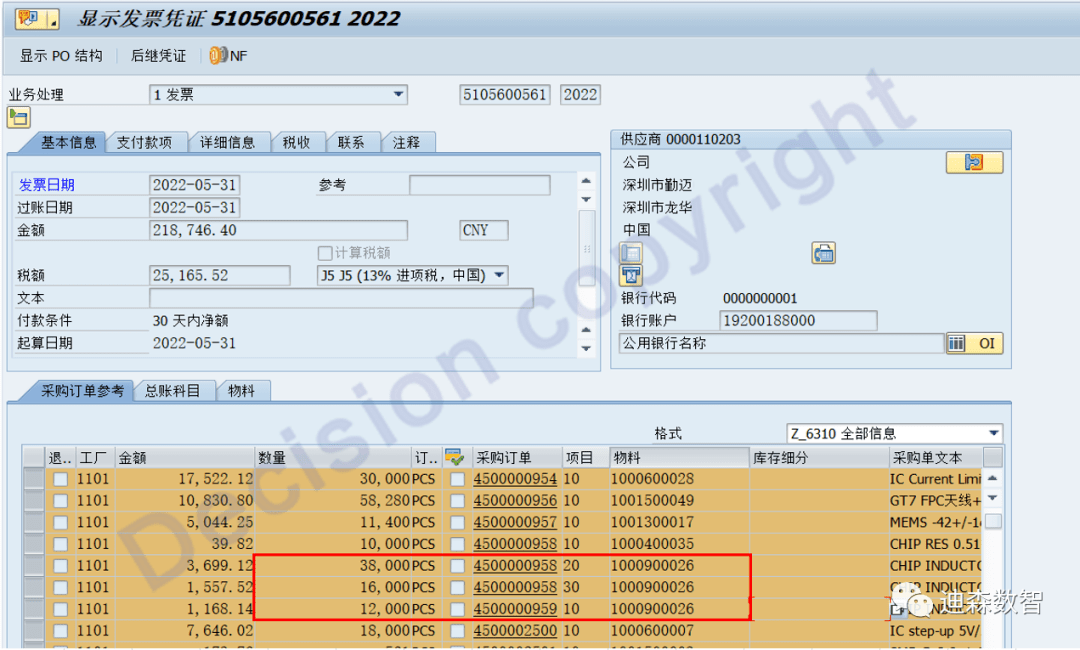
Problem solving
① When running CKMLCP, select "without overwriting by inventory quantity" for this material.

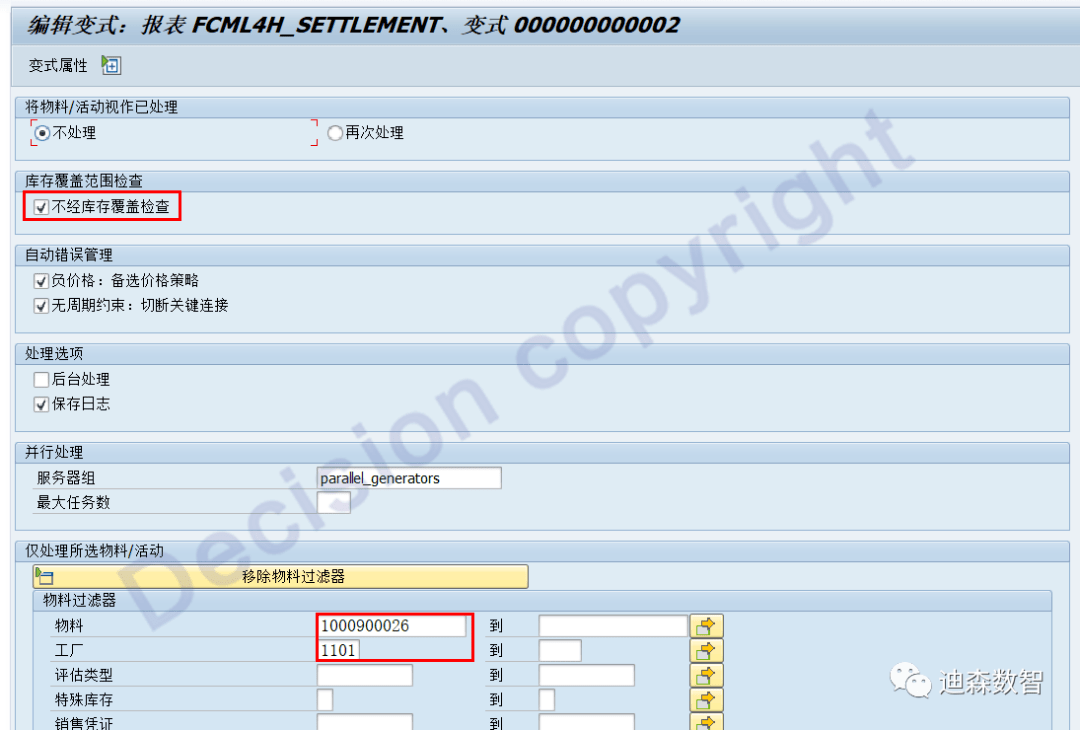
② After running CKMLCP, CKM3N checks the materials.
You can see that the difference has been assigned to: beginning of period + storage in this period.

[Case 3: Unallocated and unallocated in the warehousing direction - Price limit 3]
Problem Description
After CKMLCP runs the material ledger, we see that the factory 6100 material 1022400608 is produced in the current period and is 600EA, and the production cost difference is 67.76 yuan, of which 30.19 yuan cannot be calculated for the difference allocation in the warehousing direction.
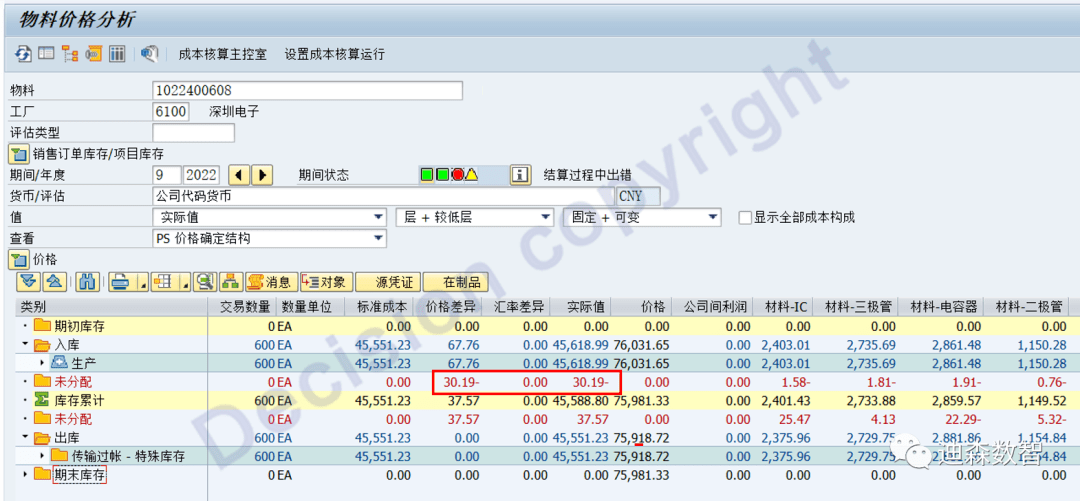
problem analysis
① Transaction code CKMVFM.
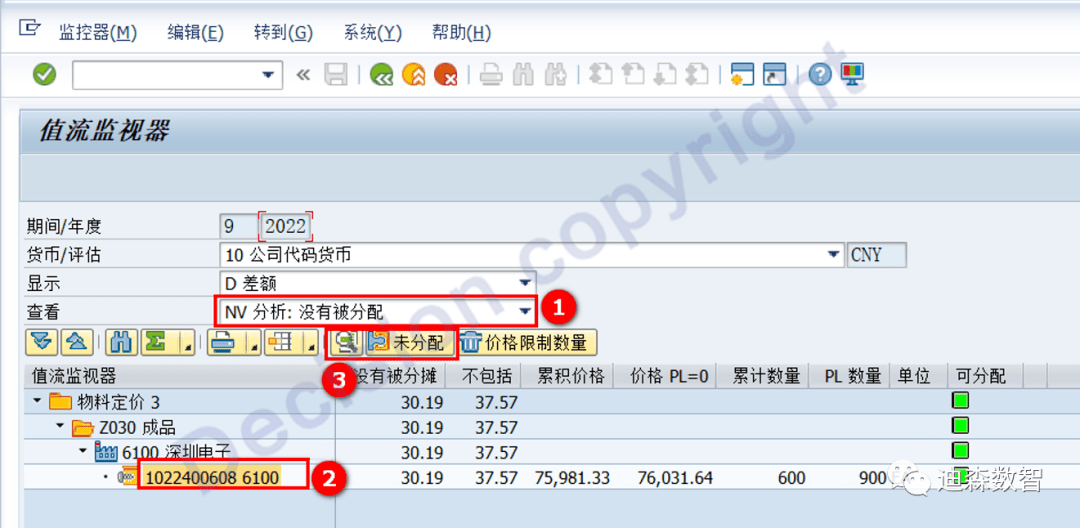

② Check the CKM3N production and warehousing difference details and find that the difference comes from three production orders: =11.13+31.74+47.70 = 90.57 yuan.
These differences are corresponding to the three production order inbound quantities:
300+300+300=900 EA, but the cumulative inventory of factory 6100 this month is 600;
Therefore, the difference that cannot be borne by the warehousing direction = (900-600) * 90.37 = 30.19 yuan.

③ Use transaction code CO03 to view the production order. You can see that the production factory is: 6100, and the production warehousing factory is 6300.
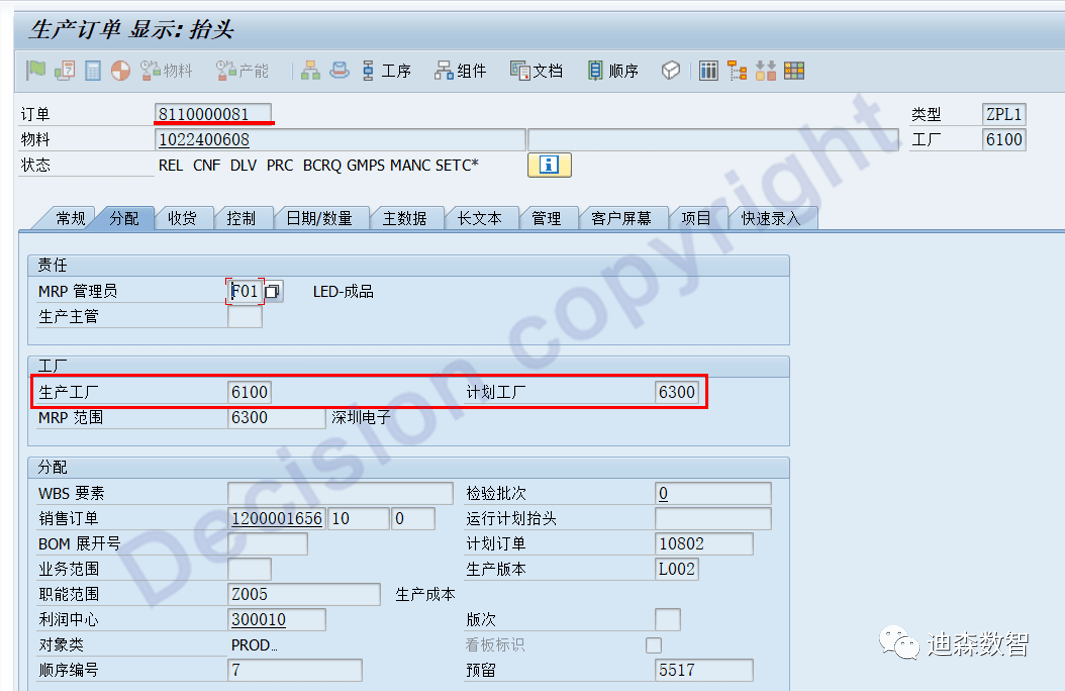
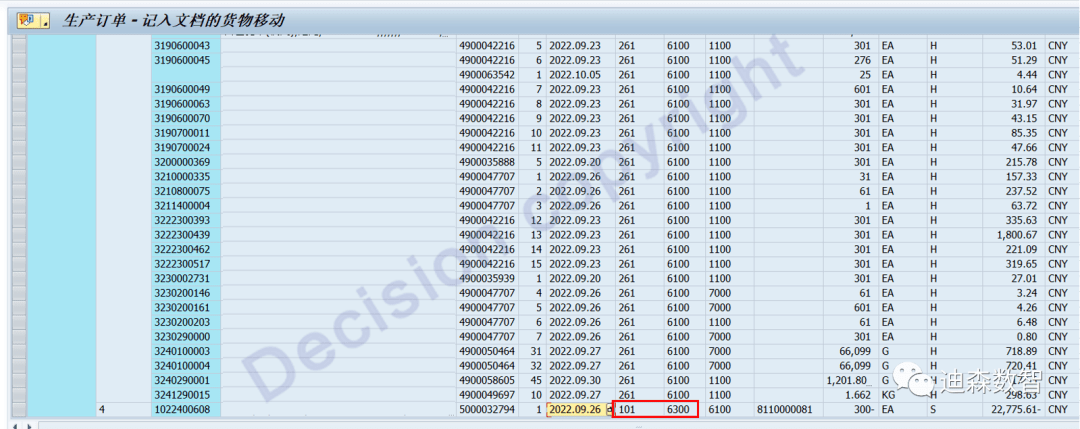
④ Check the settlement rules data table COBRB and see that the work order differences are settled to the 6100 factory.

⑤ So the result is: Order 8110000081 is produced and stored at 300EA, and goes to factory 6300, but the order cost difference is settled to factory 6100, resulting in the production cost difference corresponding to the quantity of 6100 factory being 900EA, and then the accumulated inventory is 600EA.
Solution
Method 1: When CKMLCP is running, check: Not covered by inventory.
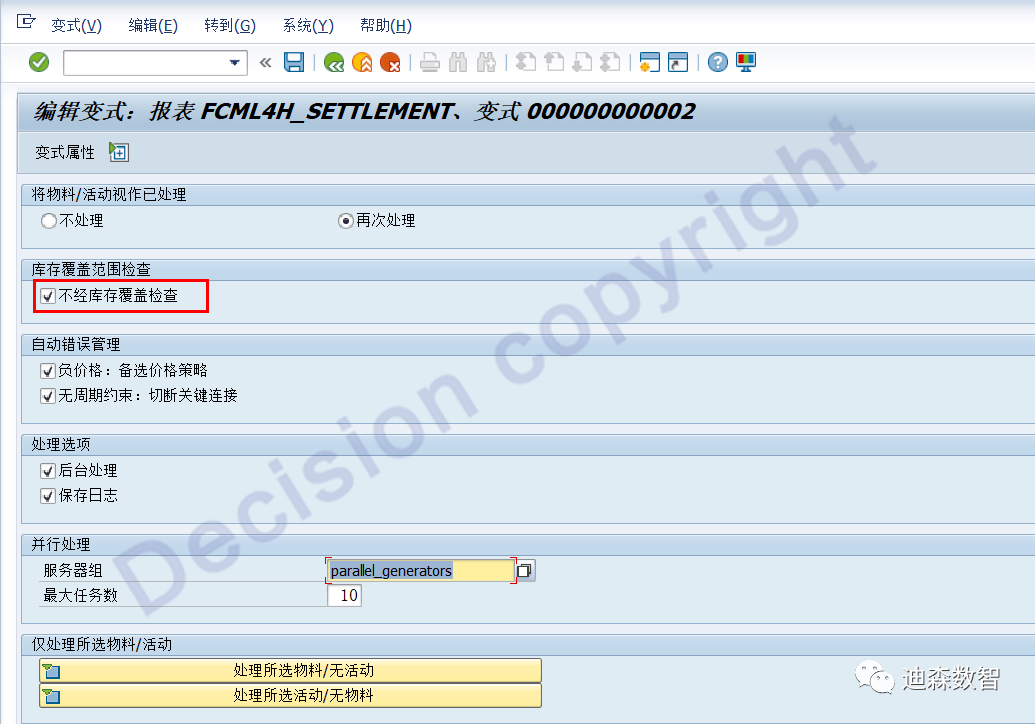
Method 2: KO88 offsets the settlement of order 8110000081, modifies the settlement rules of the COBRB table, settles the order to the 6300 factory, then settles it with KO88, and reruns CKMLCP (no need to check: no inventory coverage).
[Inbound direction unallocated unallocated - price limit 4]
Problem Description
After running the material ledger in CKMLCP, we saw that factory 7021 material 90400000000274 produced 392 EA in this period, and the production cost difference was 1,611.47 yuan, of which 1,483.23 yuan could not be calculated for the difference allocation in the warehousing direction.
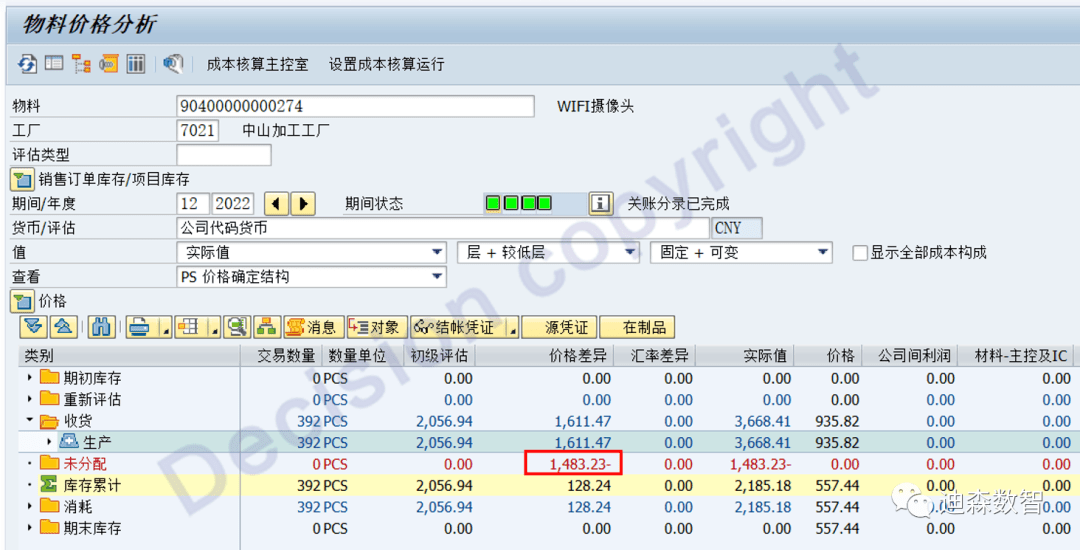
problem analysis
① Transaction code CKMVFM.
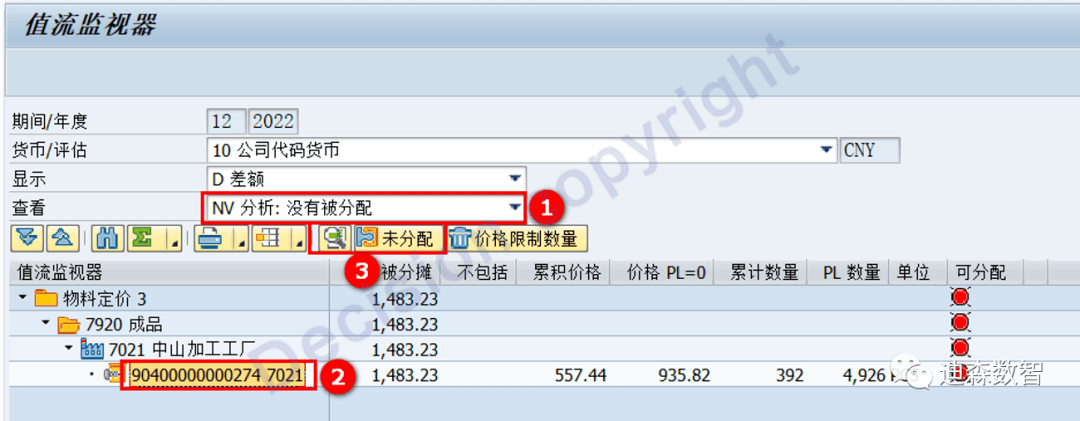
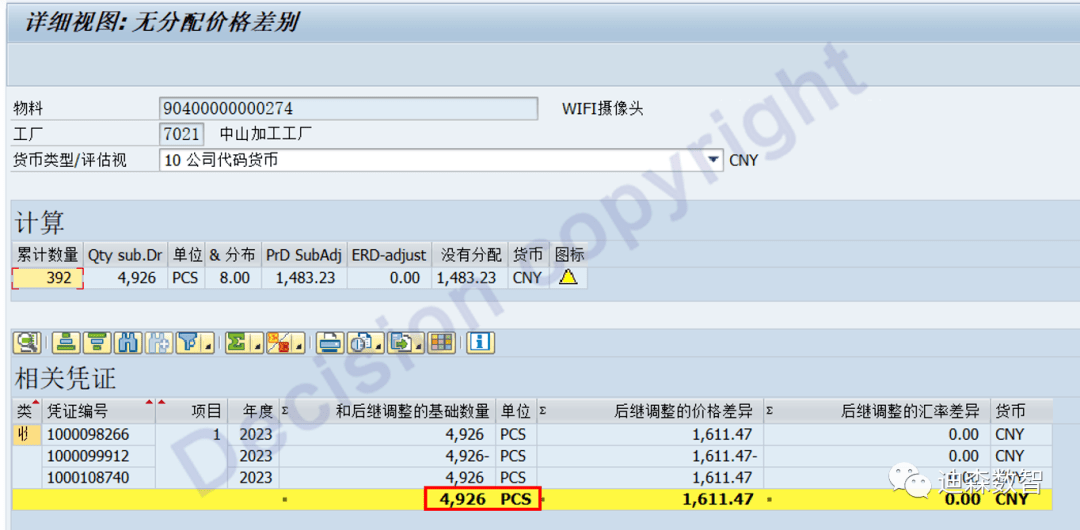
As shown in the picture above: the cumulative storage of production orders is 4926 PCS, but the cumulative storage of the current month and the beginning of the period is: 392 PCS.
② Transaction code CKM3N shows that there is only one production order in the warehouse this month: 1000002080.

③ View transaction code CO03 production order information.
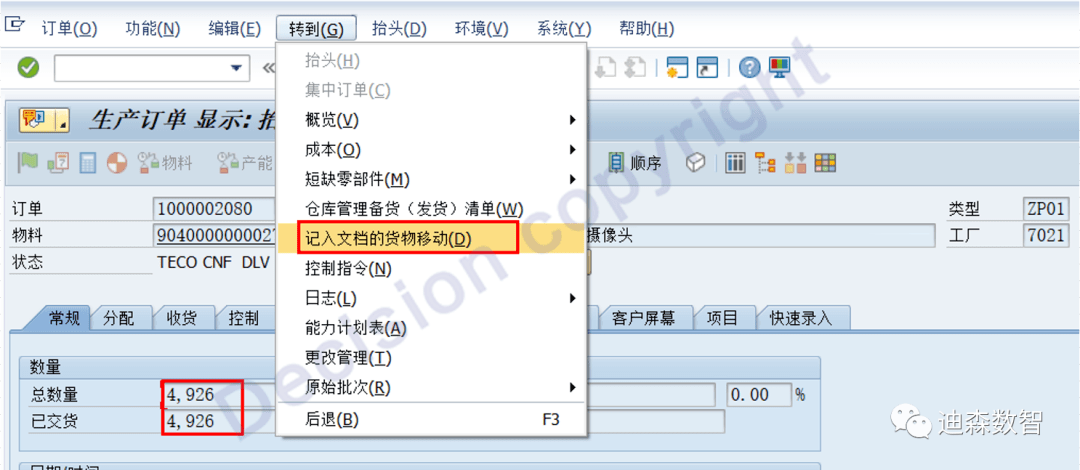

A total of 4926 PCS of production orders have been put into storage, of which 392 PCS have been put into storage in December, and other quantities have been put into storage in previous months.
④ The settlement cost difference of production order 1000002080: -1,611.47 yuan.
Warehousing in this period + cumulative quantity at the beginning of the period is 392, the difference to be borne = (-1,611.47 / 4926 ) * 392 = -128.24 yuan;
Therefore, the difference that cannot be processed in the warehousing direction = -1,611.47 – ( -128.24 ) = -1,483.23 yuan.
Solution
Method 1: CKMVFM transaction code, check the difference, delete the price limit as follows, and rerun CKMLCP after processing.
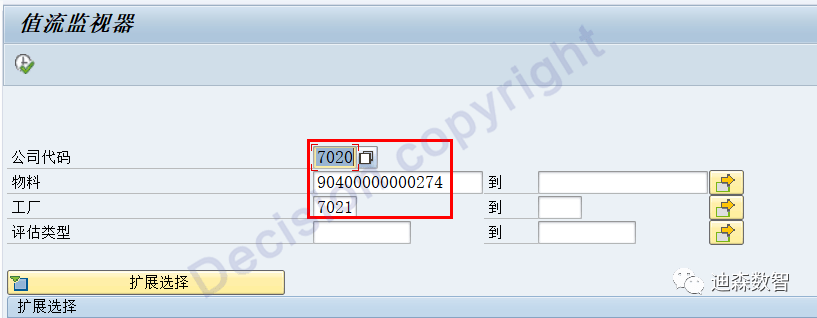
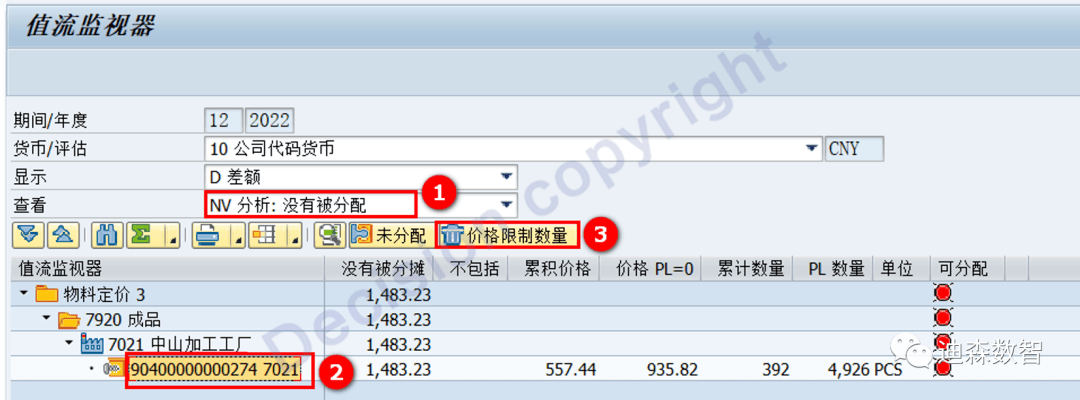
Method 2: When CKMLCP is running, check: Not covered by inventory.
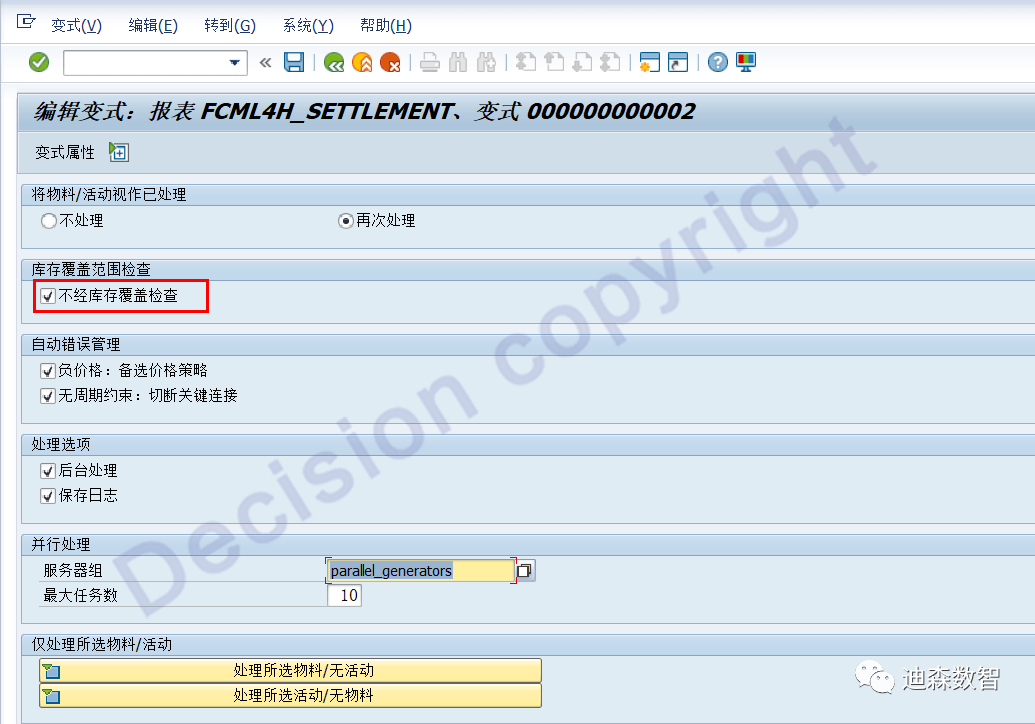
[Case 5: Unallocated and unallocated in the warehousing direction - negative price 1]
Problem Description
Factory 100A material 111920, in the transaction code CKM3N, it is found that the amount of 185161.31 yuan cannot be allocated in the warehousing direction. What is the reason and how to deal with it?
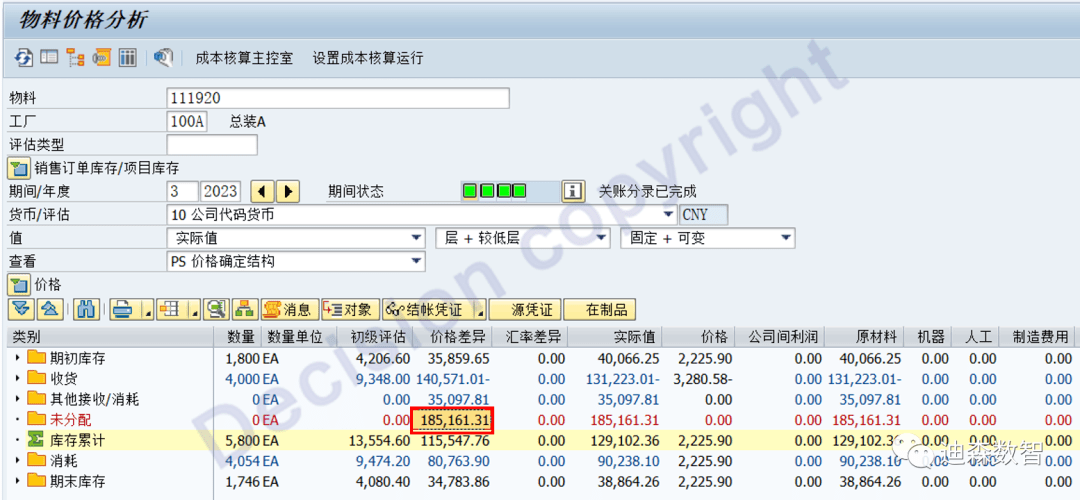
problem analysis
① Theoretically, there is no negative number in unit cost. If there is a negative number, SAP will make a forced adjustment based on the unit cost at the beginning of the period.
② As shown in the data above, before the material ledger difference is allocated, the unit cost of the current period is manually calculated to be: -12.
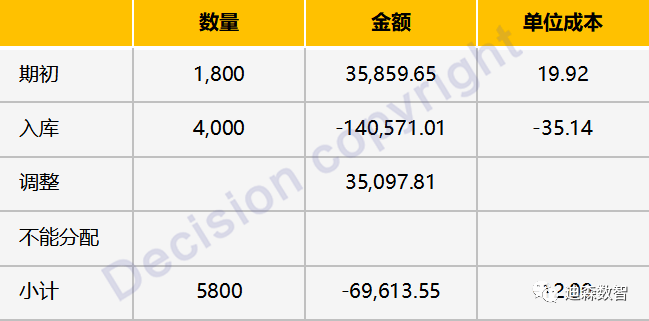
③ The SAP system believes that the negative unit cost is unreasonable, so it is forced to calculate the non-allocable difference: 185161.31 based on the opening unit cost: 19.92.
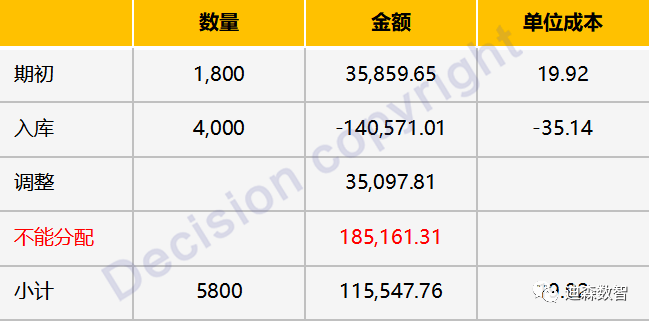
Solution
① Cancel material ledger settlement.
② Reasons for configuration revaluation.
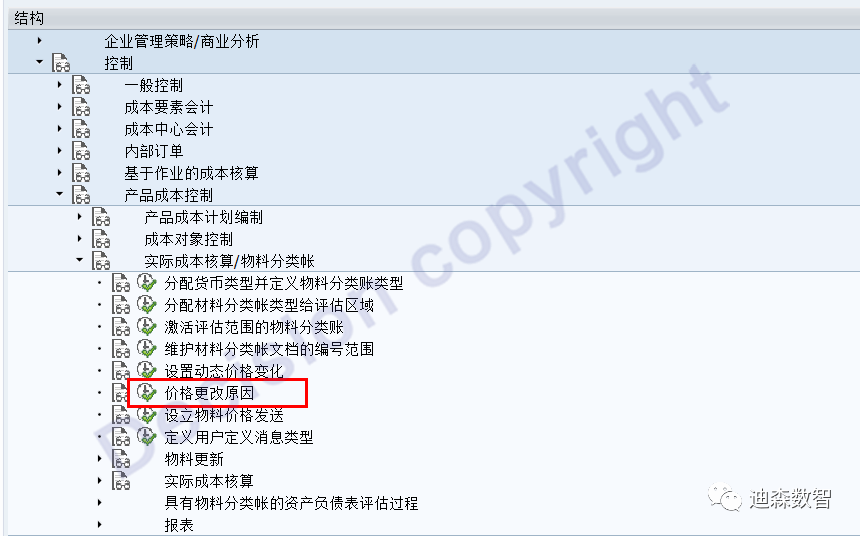
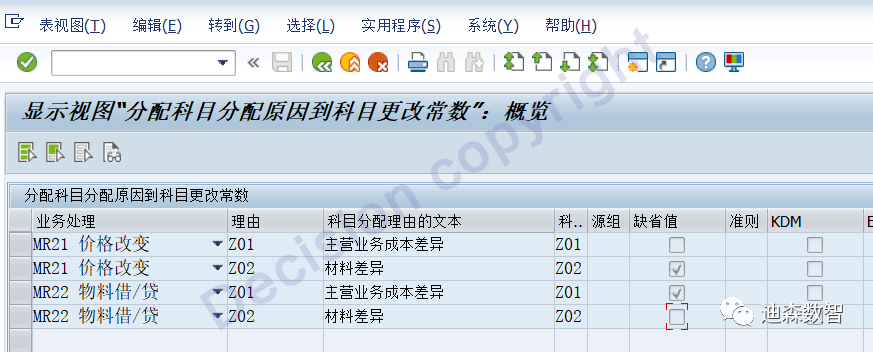
③ Configure the revaluation account and transaction code OBYC.
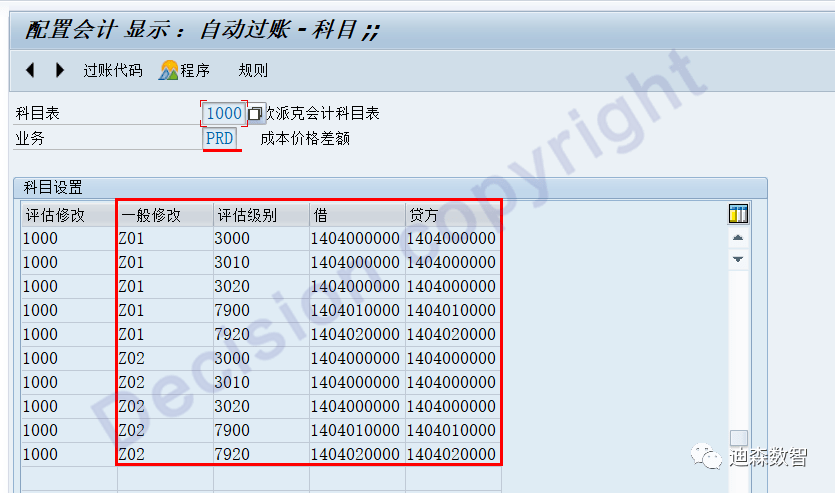
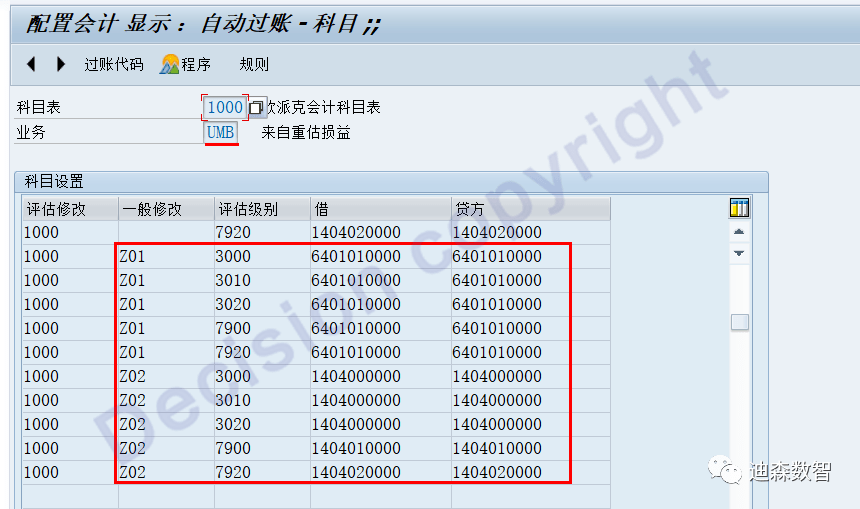
④ Adjust transaction code MR22 and select revaluation reason Z01.
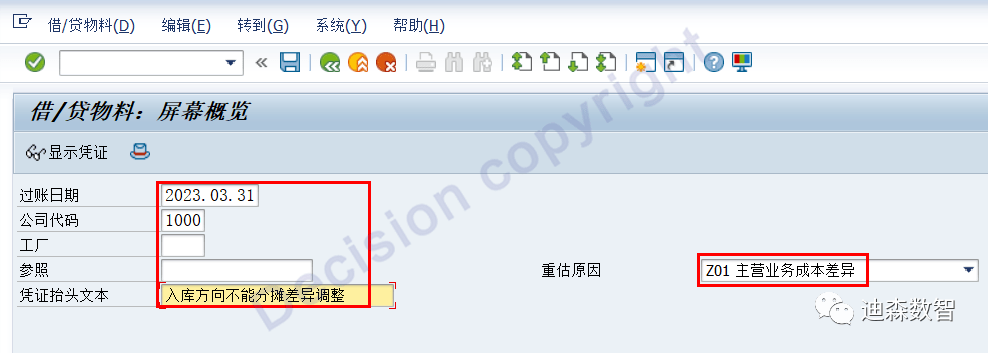
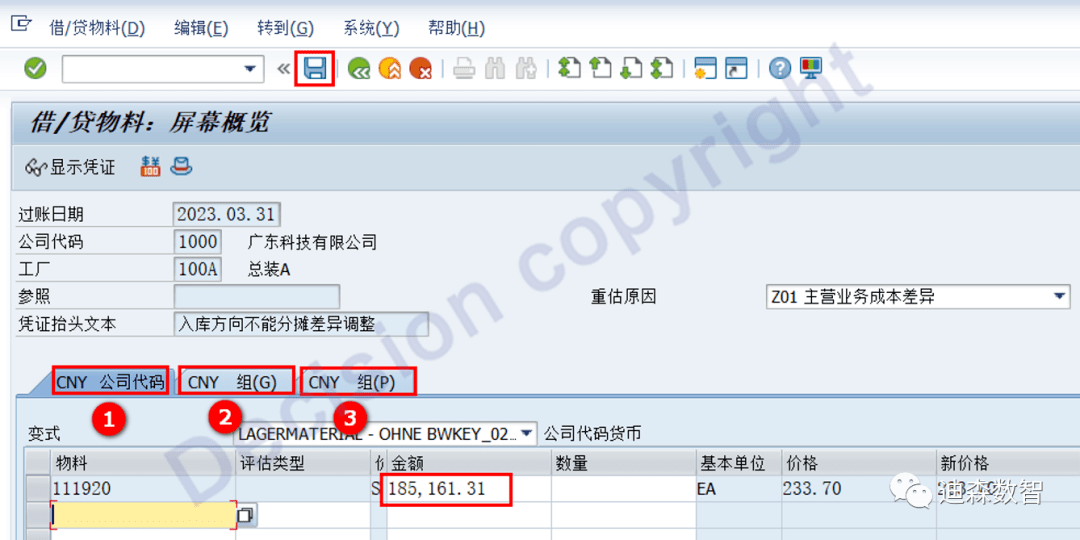
⑤ Rerun the material ledger.
Thinking summary
①Don’t abuse the MR22 transaction code to adjust costs! Because the voucher type PR generated by the MR22 adjustment will be one of the key contents of the audit.
② For each adjustment, it is recommended to prepare corresponding problem analysis and processing records, and submit them to the financial manager for review as an attachment to the adjustment voucher.
[Case 6: Unallocated and unallocated in the warehousing direction - negative price 2]
Problem Description
After the purchase returns in this period, the cost difference cannot be allocated, as follows:
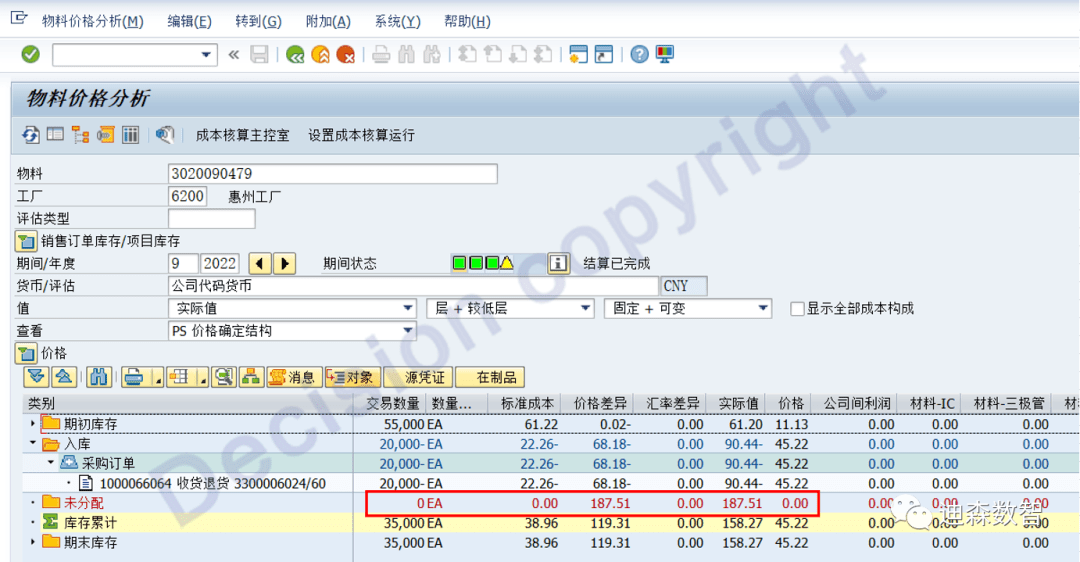
problem analysis
① Transaction code ME23N shows the return amount of 20000EA, amount: 90.44 yuan.
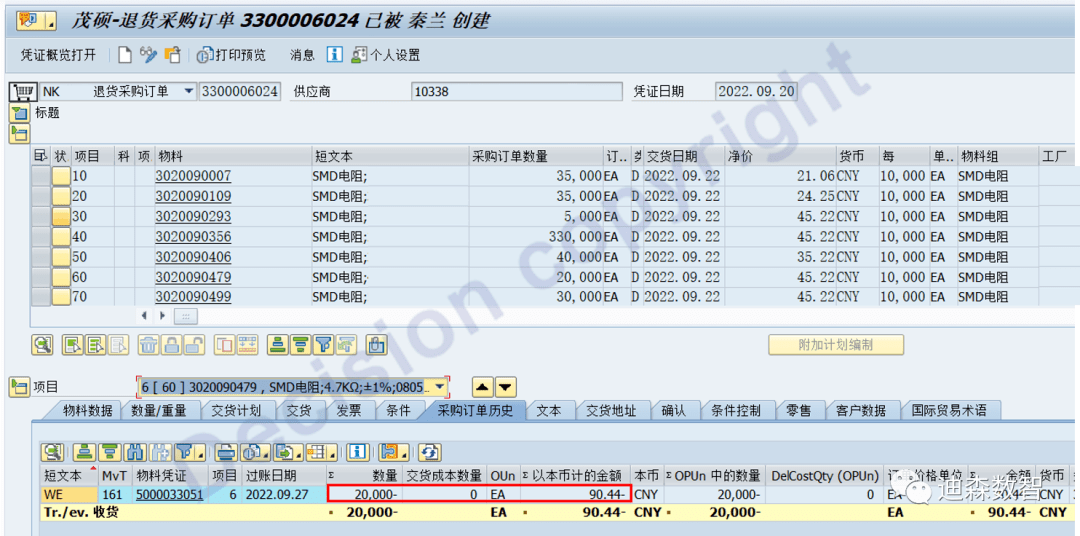
② CKM3N can see: cumulative inventory quantity = 55000-2000 = 35000EA, cumulative cost = 61.20-90.44=-29.24.
At this time, the inventory quantity is positive, the inventory amount is negative, and negative prices appear, so the system refuses to process it. The cumulative inventory quantity is calculated based on the last purchase price of 45.22/10000EA, so the unallocated amount = 35000 * 45.22/10000 – (-29.24) = 187.51 yuan.
Solution
Transaction code: MR22 adjusts the inventory amount of this material by 187.51 yuan.
【Service Guide】
For more information on SAP courses, project consultation and operation and maintenance, please call Decision's official consultation hotline: 400-600-8756

【About Decision】
Global professional consulting, technology and training service provider, SAP gold partner, SAP software partner, SAP implementation partner, SAP official authorized training center. Seventeen years of quality, trustworthy!











































